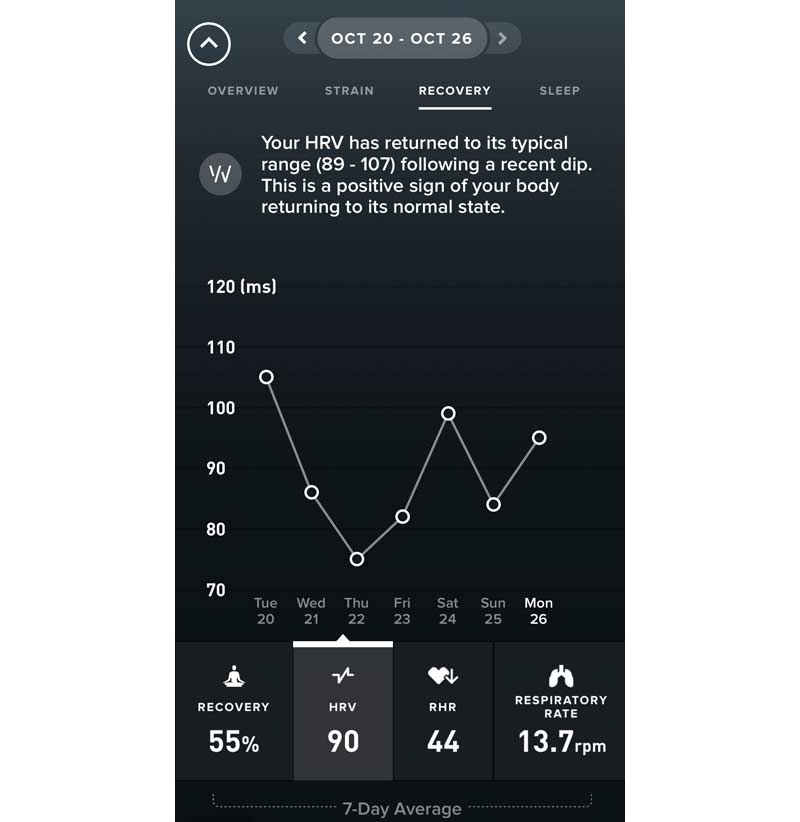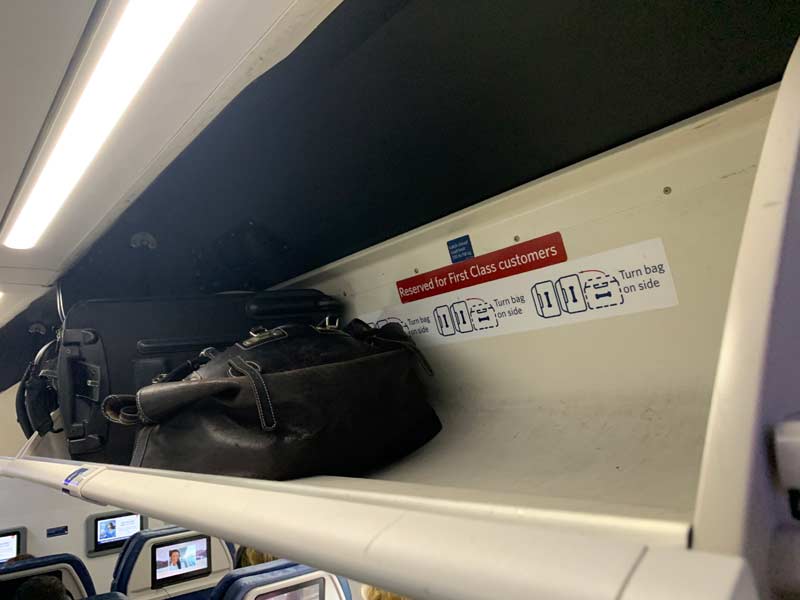Every few months, it seems there’s an innovative recovery, mobility, or power product that hits the market. Like many of you, I’m among the chorus of people asking essential questions. Does it work? Is it useful for me? Is it worth the investment? As a coach for professional athletes and Fortune 500 executives who depend on their body to perform (and then recover), I want to know the answer to these questions so I can best support their efforts.
In lieu of research—which, let’s be honest, will probably take decades before it’s conclusive—I first take steps to test new technologies and products on myself. Using metrics on my wearable device, I can test my recovery, or sleep, or a number of other factors. I’m still “wearable agnostic” and have tested out nearly all of them. For this experiment, I used both an Oura Ring and a Whoop Band and saw nearly identical scores.
While these self-experiments don’t replace double-blind peer-reviewed studies, I do my best to isolate variables and abide by the scientific process…at least as much as possible in the real world, outside of a laboratory.
With that prelude out of the way, I’ll get into discussing my first experiment today: the Normatec Pulse 2.0 from Hyperice, for which I used the Leg Recovery System.
The Normatec looks like the type of futuristic recovery tool that performance coaches have been drooling about for decades. There’s no doubt it has the “cool” factor, which draws in many people—and, quite frankly, is a huge contributor to the amount of attention a new piece of technology will get.
Attention and intrigue, though, are nothing but speculation—and I wanted to put the Normatec to the test.
For those unfamiliar, the basic concept behind the Normatec is to add compression and therefore increase blood flow and circulation, which ultimately will enhance recovery. That’s a bit of an oversimplification, but as far as my clients are concerned (and likely yours, as well), that’s sufficient. Also, I’m not as interested in how it works as I am in that it works. To understand more concepts and theories behind pneumatic compression, as well as more details on all the features of the Normatec, check out this guide to pneumatic compression recovery systems.
I settled on a six-week experiment, because that time frame lined up well with what would be a very consistent schedule for me. Since the Normatec is a general recovery tool, I used the HRV metric on my wearable device to assess how it was helping my recovery generally, rather than using soreness measurements—these would have been more challenging to measure, or track, and more likely than not would’ve just left me frustrated, and I would’ve abandoned the experiment. Again, I’ve covered why I like HRV so much here, so I won’t get into it again too much.
My Schedule
Like any experiment, controlling variables is key. My weekdays over these six weeks looked virtually the same. I woke up at 7:20 a.m. In the morning, I had a workout with our group coaching clients, followed by my own strength training. In the evening, I played men’s league pick-up hockey.
We played 60 minutes running time with seven players in each team. I averaged 39 minutes total time on ice, which is higher than any NHL player. But as any men’s league player knows, my shifts weren’t as intense as the pro game, making it a good mix of intense anaerobic and aerobic activity. By 10 p.m., I had eaten and was ready to use the Normatec.

For those unfamiliar with the Normatec, you can learn more about it here. I used the set that includes legs and boots. You pull them on like bulky pants, and for the sake of this experiment, I chose to use them while lying down. I found this to be the most comfortable and also the most practical. The sensation feels like a less-intense blood pressure cuff, except it flows back up toward the heart.
For the first two weeks and the last two weeks, I used the Normatec for 20 minutes at 10 p.m. at level four (out of seven) after playing hockey and as my last activity before bed. During the middle two weeks, I did NOT use the Normatec.
My sleeping HRV (the HRV score collected from a wearable while you sleep, and which I use as my overall indicator of recovery) normally averages 96.
My HRV Scores with and Without the Normatec
Each of these reflect the average collected over the weekday.
- Week 1: 129
- Week 2: 124
- Week 3: 96
- Week 4: 88
- Week 5: 113
- Week 6: 108
Clearly, the Normatec supported my overall recovery. Weeks three and four line up around my average HRV, while for the other weeks my recovery was better than normal. There is a downward trend over the six weeks; although I don’t have an exact explanation, my theory is that because I was trying hard to stick to the same routine week after week (including always skating at night before using the Normatec), I didn’t give myself the deload that I normally would have.

The Passive Activity Aspect
One factor I like about the Normatec is the same reason I like listening to podcasts and audiobooks: it’s a semi-passive activity. I could do other things while using the Normatec. Sure, I obviously couldn’t walk around, but I could read a book or even use my computer. (Although I didn’t use any screens because it was close to bedtime—which is a variable that would’ve messed with the experiment.) You could also do further activities that enhance your recovery, like meditate or even stretch. (I did some upper body band stretches with the legs on.)
These bonus recovery methods were my go-to. I meditated, did deep breathing exercises, and engaged in other before-bed recovery protocols while using the Normatec. These other methods are extra variables that could explain the extreme increase in HRV.
This is in contrast to other recovery methods that demand all of your energy and attention—for example, you can’t use a float tank and do anything else. In terms of practicality for clients who thrive on an ability to multitask, I like this aspect a lot.
Traveling: Pros and Cons
You can travel with the Normatec in a carry-on bag. I flew with it one weekend and had no issue getting through TSA. For athletes and executives with crazy flying schedules who need the recovery boost, I Iike that accessibility.

The downside is it’s kind of a pain to fold up and fit into the bag. You know when you go camping and the tent is really easy to take out but difficult to put back in because you have to fold it perfectly? The Normatec is a lot like that. That said, it’s still a travel-friendly recovery option, and there’s a lot to be said for that. You can charge it by plugging it into the wall, but while traveling I didn’t have to charge it because it’s good for about eight hours of use.
Shifting into a Parasympathetic State
The amount I slept, and my sleep and wake times, stayed the same each night, whether I used the Normatec or not. Yet, my recovery and sleep quality improved after using the Normatec for 20 minutes the night before. Whether the compression itself improved sleep quality is hard to quantify, because I combined the Normatec with 20 minutes of breathwork and used it while laying down, both of which helped me shift into a parasympathetic state.
As I mentioned, this is great because the Normatec is a semi-passive activity, and it created the structure to implement 20 minutes of downtime and move into a parasympathetic state. As you know, our sleep quality improves the more we can shift into a parasympathetic state prior to bed. I believe the Normatec was effective at creating the environment for me to do that.
Our sleep quality improves the more we can shift into a parasympathetic state prior to bed. I believe the Normatec was effective at creating the environment for me to do that.A Tool Worth Investing in
Personally, I will use the Normatec on a regular basis and travel with it even when I don’t check bags. I recommend it to my clients who frequently travel, especially if they change time zones. In general, I like how accessible it is, and I think it’s great for any competitors and those who need to prioritize recovery. The only roadblock is the cost, but that’s a decision for you to make.
If you own a gym, this is an easy tool to add to a suite of recovery tools for your clients, where they can just come in and use it. One unit for a whole gym becomes a lot less of a pricy investment. This was an overview of my impressions, and I do think this type and class of recovery tools has a lot of potential benefit in the right settings both now and in the future as the technology continues to improve.

